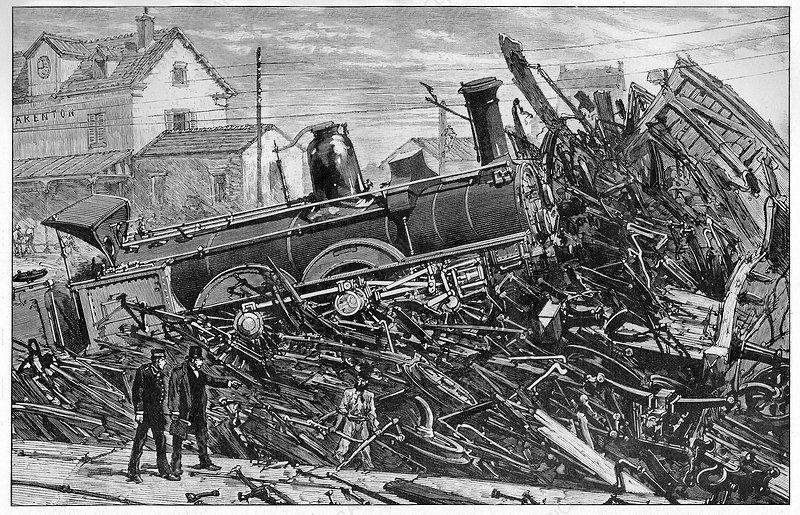The Tech of Death

Gizmodo has this series where they ask experts this or that. For this week’s version, they asked a bunch of historians about which technology has led to the most accidental death. I was one of the historians they asked and pointed to the railroad.
I don’t know if trains have in fact killed more people by accident than automobiles, but it’s worth noting the shocking level of fatalities trains caused in the nineteenth century. Put bluntly, both workers and passengers placed their life at risk by interacting with trains. For many decades, American trains were far more dangerous than those of Europe. The rail historian Mark Aldrich has written about this in great and horrifying detail. Railroad workers died at appalling rates, often crushed between the cars. Derailments killed passengers and workers alike. An utter indifference to accidents by the rail companies, the courts, and politicians stood in stark contrast to Britain, where only a fraction of people died compared to the U.S. Given that the railroads also became the nation’s first coordinated transportation network, people also died frequently after hopping them to ride the rails from place to place and job to job.
Moreover, trains routinely killed bystanders in cities. Tracks ran through heavily populated city centers and the companies did very little maintenance to ensure that people could cross them safely. Ruts between tracks and roads meant that people with carts often got stuck and the trains ran them down, for instance. On top of this, trains added massive amounts of smoke and noise to the cities, seriously lowering the quality of life for residents. The rail industry’s insatiable greed also led its leading capitalists such as Jay Cooke and Jay Gould to sink the economy due to their irresponsible speculation. The Panic of 1873 and Panic of 1893 were major economic depressions that also caused collateral damage in lives from the conditions of poverty and hopelessness. It is worth noting that the major labor actions against railroads in the late nineteenth century, such as the Great Railroad Strike of 1877 and the Pullman Strike in 1894, were community rebellions against the railroads as much as they were traditional labor strikes, with the majority of the protestors not workers on strike.
Railroads became safer in the twentieth century, but the corporate indifference to Americans’ lives has consistently led to unnecessary deaths, including in the meatpacking plants during the covid-19 crisis.
The other answers are quite interesting as well. People brought up everything from tobacco to the cotton gin to dams.
